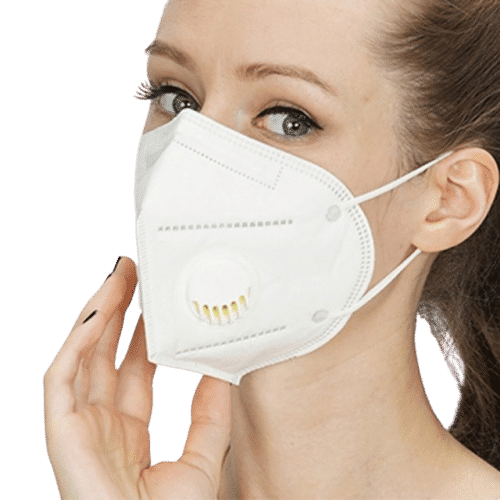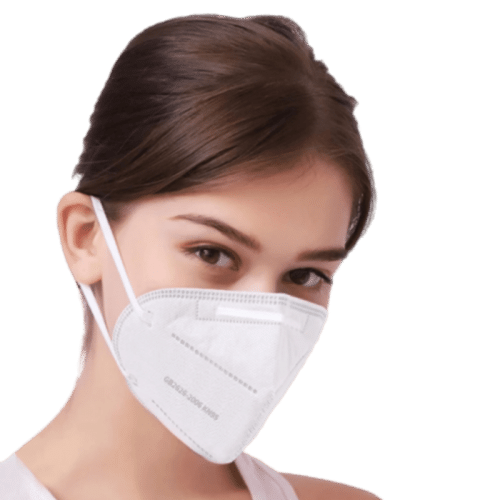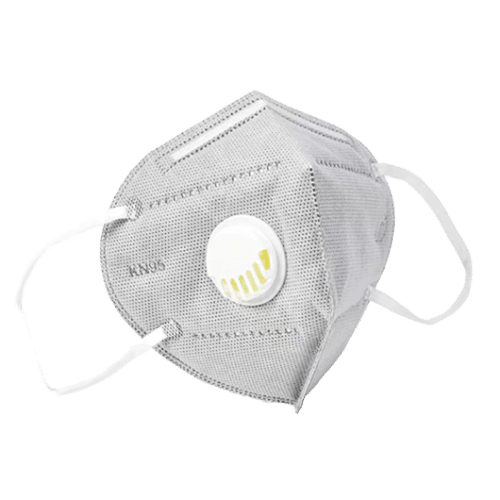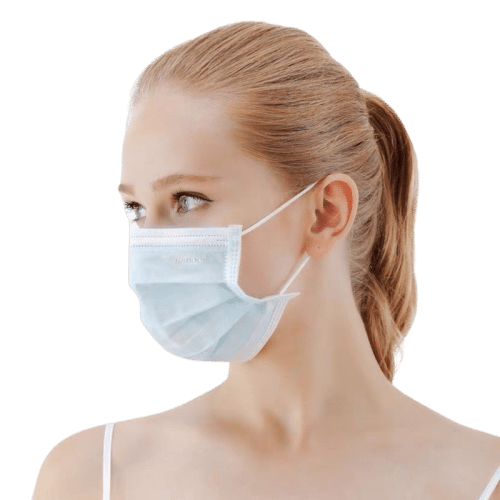Description
EzeBreathe KN95 4-Layer Protective Face Mask: – With respirator valve – White
Designed to filter out dust, chemicals, particles, pollen, and smoke.
With a Respirator Valve, this mask uniquely enhances breathability by reducing heat and moisture build-up whilst maintaining respiratory resistance, minimising fogging of glasses, and enhancing overall comfort.
The respirator valve can reduce the protection to a degree, but still offers a higher protection level compared to a 3 layer pleated disposable mask.
This product is crafted from lightweight, breathable material that’s strong and durable.
Customisable fit for maximum protection and comfort.
Suitable for all face shapes and sizes.
Adjustable nose piece ensures better coverage and personalized comfort.
Layer by Layer Breakdown:
Layer 1: Breathable non-woven isolation layer – Blocks larger particles and microorganisms.
Layer 2: Melt-blown cotton – Strengthens filtration of dust and absorbs moisture for extended comfort.
Layer 3: Electrostatic absorption cotton – Enhances fine particle filtration efficiency.
Layer 4: Skin-friendly non-woven fabric – Provides a gentle touch against the skin.
The combination of these specialized materials transforms the EzeBreathe KN95 4-Layer Protective Face Mask into a comprehensive defense system.
Each layer is carefully chosen to complement the others, creating a harmonious blend of strength, filtration efficiency, and comfort.
Features – Standard KN95 masks “with an exhalation valve” compared to a 3 layer disposable mask
Filtration Efficiency:
High level of filtration efficiency filtering out at least 95% of airborne particles that are 0.3 microns in diameter or larger.
This includes various types of particles, such as dust, allergens, and pathogens like viruses.
Two-Way Protection:
“With an exhalation valve” both inhalation and exhalation air pasess through the mask’s filtration layers but at a slightly reduced level of proection as some air can pass in and out of the valve with reduced filtration.
With an exhalation valve the mask still provides adequate protection to both the wearer and those around them, as respiratory emissions are contained within the mask.
The main benefit of the mask is easier breathing with more circulation within the mask, and less chance of fogging of glasses for people that wear glasses.
Community Protection:
Standard KN95 masks are recommended in situations where community-wide protection is essential.
They help prevent the spread of respiratory droplets from the wearer to others, making them suitable for public settings and areas with a higher risk of virus transmission.
Healthcare Settings:
In healthcare settings, where infection control and protection are paramount, KN95 masks without valves are commonly used to provide respiratory protection to healthcare workers and patients.
Adjustable Fit:
Standard KN95 masks are designed to fit securely over the nose and mouth, offering a comfortable and effective seal.
Adjustable nose clips and elastic ear loops contribute to achieving a snug fit.
Comfort and Wearability:
While some people might find masks with exhalation valves more comfortable for prolonged use, standard KN95 masks without valves are still designed with wearer comfort in mind.
They are suitable for general public use, healthcare professionals, and various industries.
In summary, standard KN95 masks “with exhalation valves” are designed to provide effective two-way filtration and protection to both the wearer and those around them.
They are recommended for scenarios where community protection and preventing the spread of respiratory droplets are priorities.
It’s important to note that the choice between a KN95 cupped-shaped masks with and without a respirator valve and a pleated surgical mask should be based on the specific context and intended use.
Responsibility
Do Not Reuse Masks: Disposable masks are designed for single-use only. Reusing them can compromise their effectiveness and potentially spread contaminants.
Hygiene: When disposing of masks, handle them with care to avoid contact with the outer surface, which might have come into contact with germs.
Personal Safety: If you suspect you’ve been in contact with someone who is sick, especially with a contagious illness, follow specific guidelines for mask disposal to prevent potential transmission.
Ultimately, responsible mask disposal contributes to public health and environmental well-being.
Always prioritize safety and follow the recommendations of health authorities in your area.







Reviews
There are no reviews yet.